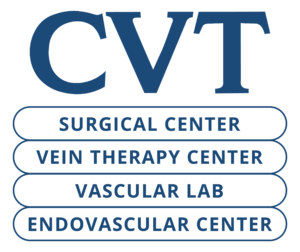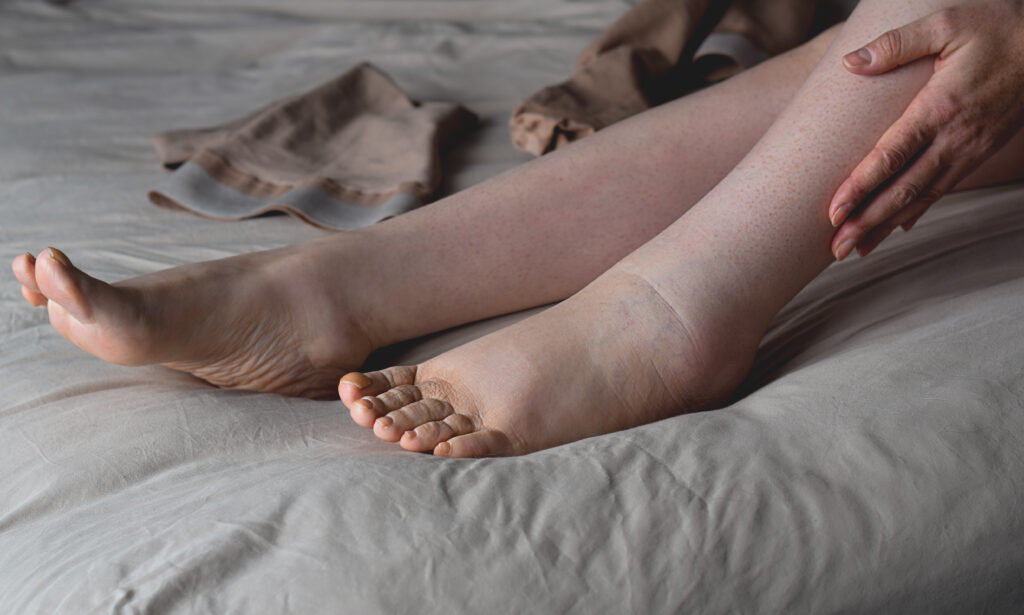Summer in Louisiana brings warmer weather, longer days—and for many, swollen legs that seem to appear out of nowhere. You might notice your feet and ankles feeling tight, your shoes fitting more snugly, or a general heaviness in your lower limbs after a day outside in the heat. Understanding the reason behind your swollen legs during the summer can help you choose the right treatment and avoid long-term complications that could impact your quality of life.
What Causes Leg Swelling in the Summer?
Leg swelling is a common concern for many Baton Rouge residents, especially during the hot and humid summer months. The intense heat can place extra strain on your circulatory system, often triggering or worsening swelling in the lower legs and feet.
Vasodilation and Heat Edema
When the temperature rises, your body initiates a process called vasodilation, where the blood vessels—especially near the surface of your skin—widen to help release heat and regulate your core body temperature. As the blood vessels expand, they become more permeable, allowing fluid to seep into the surrounding soft tissues. This fluid leakage leads to swelling, particularly in the lower legs, ankles, and feet. This type of swelling, known as heat edema, is typically mild and easily alleviated once your body cools down.
Gravity, Fluid Accumulation, and Inactivity
Gravity plays a key role in summer leg swelling. As you stand or sit throughout the day, fluids naturally pool in your lower extremities. In hot weather, your body retains more water to maintain hydration. This combination of increased fluid retention and downward pull leads to noticeable puffiness in the legs and feet. Lack of movement due to high temperatures decreases blood circulation, which can further exacerbate swelling.
Learn about Compression Therapy for Leg Swelling
Persistent Swelling May be a Sign of Chronic Venous Insufficiency (CVI)
Although heat edema is typically a temporary condition, it’s essential to know when summer leg swelling could be signaling something more serious, such as chronic venous insufficiency (CVI).
CVI is a progressive vascular disorder that occurs when the valves in the leg veins become weak or damaged. These valves are responsible for keeping blood flowing upward toward the heart. When they fail to function properly, blood begins to pool in the lower legs, leading to persistent swelling, discomfort, and visible vein changes.
One of the biggest challenges is that heat edema and CVI can look deceptively similar at first. Both may cause puffiness, especially around the ankles and feet, and both are aggravated by prolonged standing or hot weather. However, the underlying mechanisms and treatment strategies are very different.
How to Tell the Difference Between Heat Edema and CVI
Knowing what to look for can help you determine whether your symptoms are simply heat-related or a possible sign of something more complex.
Signs of Heat Edema
Heat edema is usually a mild and reversible condition. It’s your body’s way of managing excess heat by widening blood vessels, which can result in fluid leaking into the tissues.
Common signs include:
- Mild swelling or puffiness in the feet, ankles, or lower legs
- No pain or skin changes—the skin remains normal in color and texture
- Symmetrical swelling (both legs and feet appear equally swollen)
- Symptoms improve quickly when you elevate your legs, cool down, or move around
- Most common in people who are otherwise healthy
This type of swelling often appears after long periods in hot environments or after traveling, especially when sitting or standing still.
Signs of CVI
CVI may begin subtly, but over time, the symptoms become more distinct and harder to ignore. Unlike heat edema, swelling from CVI is due to malfunctioning vein valves that allow blood to pool in the legs.
Key indicators of CVI include:
- Swelling that doesn’t go away easily or returns regularly
- Heaviness, aching, or fatigue in the legs, especially after standing or sitting for extended periods
- Itchy, dry, or discolored skin near the ankles—often a reddish or brown hue
- Development of enlarged or bulging veins (varicose veins)
- Hardening or thickening of the skin, or the appearance of venous ulcers in more advanced stages
- Symptoms often appear more intensely in one leg than the other
Treatment for CVI in Baton Rouge
If you notice that your swelling is chronic, worsens in hot weather, or is accompanied by pain or skin changes, it’s time to consider an evaluation for CVI. Early diagnosis can prevent complications like skin breakdown, ulcers, or deep vein thrombosis (DVT). The board-certified vascular surgeons at CVT specialize in the evaluation and treatment of chronic venous insufficiency and its complications. Request your appointment today and take the first step toward lasting relief.

